This past weekend we (as in all of us on Earth) were treated to a lunar eclipse. At least those of you who lived in a non-cloud infested city were. The eclipse started at about 4:45 am and ended about 6:30 am in Vancouver. Unfortunately from the vantage point I chose I only got to watch it for about 25 minutes before clouds rolled in a covered the entire sky. Its actually doubly sad because this is the last lunar eclipse until sometime in 2014.
Despite the poor seeing conditions I did manage to see about 1/4 of the eclipse and I'm thankful for that. I set up my telescope and camera in Terra Nova park in Richmond. I was planning on taking a nice mosaic of the eclipse at different times but this was thwarted by the clouds. And my poor choice of cameras. Out of haste I grabbed my modified T3i which has the IR filter removed. The result is a noticeable reddening of the moon even though it should be a nice off white until totality (which I missed). Anyway since I missed the majority of the eclipse I've only included one of the unedited pics I took just after the eclipse started. Enjoy!
Sunday, December 11, 2011
Friday, December 2, 2011
Second take at Orion
Orion Nebula, Year 2.
Last year when I seriously started astrophotography the Orion nebula was my first real target. Its bright. Its easy to find. And it looks really cool. However its also really hard to get a decent image of. Mostly because the stars that make up the Trapezium (the bright central part) overwhelm the more diffuse, dim outer layers. This was my second attempt, and due to a malfunctioning autoguider, shifting tripod and really cold temperatures it was limited to about fifteen 30 second unguided exposures. Still, its worlds better then last years shots. I've put the two shots side by side for easy comparison.
Sunday, September 4, 2011
Fall Astronomy
With the start of September I guess its fair to say that fall has begun. Ironically the weather is more like what should be expected in the middle of July. Warm, clear days with nights perfect for stargazing. Ironically I have to go back to work in a few days and my stargazing nights will be mostly limited to weekends. However this past weekend I did my best to get out and enjoy the wonderful fall sky; over two nights I spend more than 10 hours staring up at the stars. I've also decided that I really should replace my LVI autoguider. There are definitely better, more user friendly autoguiders out there. So that will be my next major purchase. This realization came while I was trying to image the Pelican nebula (below).
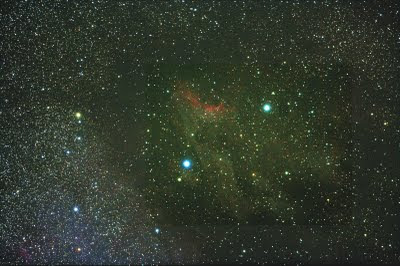
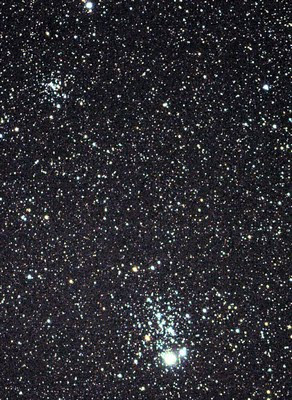 Its a bit difficult to really make out. The nebula didn't turn out quite as well as I had hoped, particularly in comparison to the North America Nebula which is right next to it (and something I imaged when I was in Merritt). Despite the fact that this was nearly an hours worth of images I'm guessing that because the Pelican Nebula is mostly HAII my unmodified camera wasn't able to really gather all the light that it should have. That and because this was taken from Mount Seymour and not and dark sky site like Merritt.
Its a bit difficult to really make out. The nebula didn't turn out quite as well as I had hoped, particularly in comparison to the North America Nebula which is right next to it (and something I imaged when I was in Merritt). Despite the fact that this was nearly an hours worth of images I'm guessing that because the Pelican Nebula is mostly HAII my unmodified camera wasn't able to really gather all the light that it should have. That and because this was taken from Mount Seymour and not and dark sky site like Merritt.
In addition to this photo I also took some time to shoot the Eskimo Cluster (NGC 457) and another nearby small cluster. These ones aren't quite as well suited to a wide field scope like my TV85 but they still turned out reasonably well. Still they turned out alright. I guess if you use your imagination you can see why the cluster was given the nickname of the ET cluster.
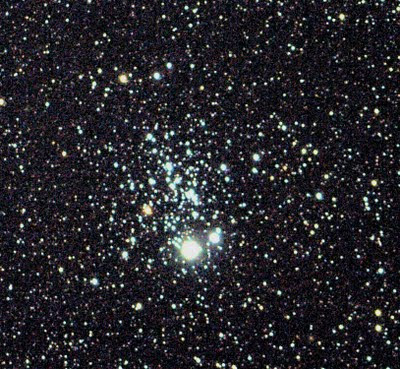
Tuesday, August 30, 2011
Merritt Star Quest

Last weekend I spent three days at the Merritt StarQuest. The weather and skies were absolutely beautiful! Luckily I brought enough clothes because I wasn't really expecting the huge temperature swing that we had. During the day the high was around 35 degrees but by 2:30 am the temperature was down around 5 degrees. Asides from the night time lows, the skies were brilliant. The Milky Way was so bright it was often a distraction from the rest of the sky. I can't wait until next year! Hopefully the weather will allow for more nights of stargazing!
The first night was largely used in polar aligning my telescope, setting up my autoguider and in general getting ready to observe. I was quite frustrated with my autoguider, which I'm now planning on replacing. Fortunately a friend of mine had an extra autoguider that I was able to test out which worked quite well. After much cursing and frustration I finally managed to get a few decent pictures.
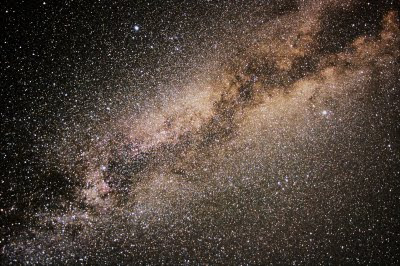 This is a composite of 4 five minute shots of the milky way taken with an 18 mm lens on my Canon rebel xTi. In order to avoid star trailing the camera was mounted on my HEQ5 tracking mount.
This is a composite of 4 five minute shots of the milky way taken with an 18 mm lens on my Canon rebel xTi. In order to avoid star trailing the camera was mounted on my HEQ5 tracking mount.
North America Nebula
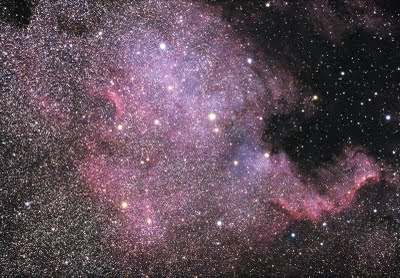 This is 8 five minute exposures through a TV85 taken with a Rebel xti.
This is 8 five minute exposures through a TV85 taken with a Rebel xti.
Pleiades

3 five minute images through my TV85 with a Rebel xTi
Friday, August 5, 2011
More summer astrophotography
Since the beautiful west coast weather continues so to do the opportunities to take pictures. The latest include a few more shots of Andromeda and the Whirlpool Galaxy as well as a new target: the North American Nebula. I think I've finally got my autoguider working correctly and so far am reasonably pleased with how its going. Hopefully I'll have one more opportunity before I leave for Spain!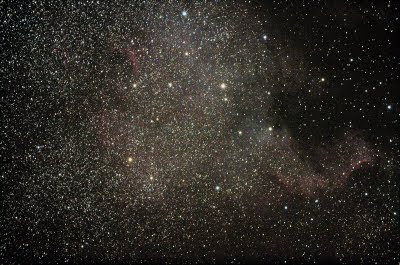
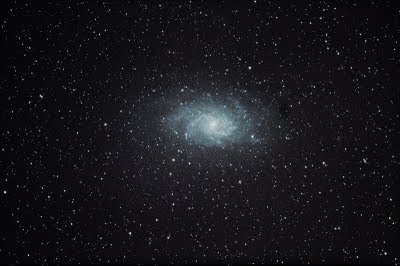




Saturday, July 30, 2011
Galaxies, Clusters and Nebulas

In the past 6 weeks I've done more stargazing than I have in the past 6 months. This includes 3 or 4 all night sessions on Mount Seymour and a few nights in the park across from our condo. The photography is fun, but very demanding. Even though it can take an hour to get one good picture, being able to look at what I've accomplished is definitely worth all the cold nights.
The latest photos, taken July 29th include a nice shot of the Triangulum Galaxy and the Pleiades. I'm especially pleased with the Pleiades mostly because I also captured the reflection nebula around it.
The latest photos, taken July 29th include a nice shot of the Triangulum Galaxy and the Pleiades. I'm especially pleased with the Pleiades mostly because I also captured the reflection nebula around it.

Thursday, July 28, 2011
A few more summer pics
I'm taking full advantage of the nice weather I've finally been given. After months and months of cloud and rain its finally summer and warm in 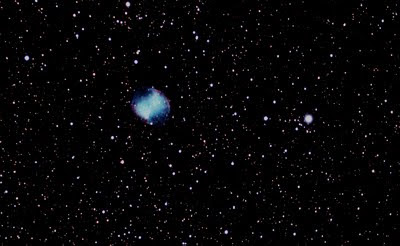 Vancouver. So over the last month I've spent many hours staring at the stars and the little LCD display on my DSLR. All that work has resulted in the following two pictures (actually there are about half a dozen more but they didn't turn out particularly well). I'm slowing getting the focusing issue under control at least with the my refractor (the SCT is still a pain to deal with photographically speaking). Anyway these pictures are of the Dumbell Ne
Vancouver. So over the last month I've spent many hours staring at the stars and the little LCD display on my DSLR. All that work has resulted in the following two pictures (actually there are about half a dozen more but they didn't turn out particularly well). I'm slowing getting the focusing issue under control at least with the my refractor (the SCT is still a pain to deal with photographically speaking). Anyway these pictures are of the Dumbell Ne bula (look to a previous post if you want to compare it to my first image of the Dumbell Nebula.)
bula (look to a previous post if you want to compare it to my first image of the Dumbell Nebula.)
The second image is of the Ring Nebula. Its a very small, bright planetary nebula. This picture (like most of the images) was taken through my 85 mm refractor and I think the next time I decide to image the Ring Nebula I'll try it with my 8" SCT. Its such a small target that the extra magnification should make a bug difference.
 Vancouver. So over the last month I've spent many hours staring at the stars and the little LCD display on my DSLR. All that work has resulted in the following two pictures (actually there are about half a dozen more but they didn't turn out particularly well). I'm slowing getting the focusing issue under control at least with the my refractor (the SCT is still a pain to deal with photographically speaking). Anyway these pictures are of the Dumbell Ne
Vancouver. So over the last month I've spent many hours staring at the stars and the little LCD display on my DSLR. All that work has resulted in the following two pictures (actually there are about half a dozen more but they didn't turn out particularly well). I'm slowing getting the focusing issue under control at least with the my refractor (the SCT is still a pain to deal with photographically speaking). Anyway these pictures are of the Dumbell Ne bula (look to a previous post if you want to compare it to my first image of the Dumbell Nebula.)
bula (look to a previous post if you want to compare it to my first image of the Dumbell Nebula.)The second image is of the Ring Nebula. Its a very small, bright planetary nebula. This picture (like most of the images) was taken through my 85 mm refractor and I think the next time I decide to image the Ring Nebula I'll try it with my 8" SCT. Its such a small target that the extra magnification should make a bug difference.
Tuesday, July 5, 2011
Galaxies & Nebulae of the summer

After one of the first stargazing seasons I can remember it looks like summer has finally arrived. The last few days have been beautiful. So last Saturday I set out for a 4.5 hour stargazing session on Mount Seymour. My goal was to test my telescopes focusing ability and see how long I could track for. I was also eager to try and get some nice deep sky pictures. In addition to this I really wanted to get my autoguider working properly.
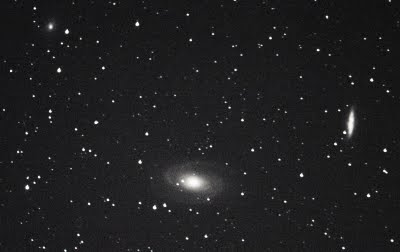 I managed to more or less accomplish most of my goals. Focusing was acceptable on the TV-85. Not perfect, to do that I suspect I'll need a motor-focuser (and a camera with live view so I can properly use my Bahtinov mask). The maximum time I could track for without trailing becoming too noticible was just under 3 minutes. Both of these resulted in some nice deep sky pictures. I still have higher expectations but it was a good start.
I managed to more or less accomplish most of my goals. Focusing was acceptable on the TV-85. Not perfect, to do that I suspect I'll need a motor-focuser (and a camera with live view so I can properly use my Bahtinov mask). The maximum time I could track for without trailing becoming too noticible was just under 3 minutes. Both of these resulted in some nice deep sky pictures. I still have higher expectations but it was a good start.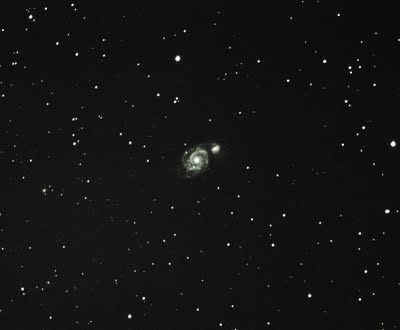
Saturday, July 2, 2011
Summer Sun
Well, after what seems like months of rain and clouds it seems like summer might actually have arrived. The last few days have been more or less rain free and the clouds are slowly starting to reveal the blue sky behind them. Unfortunately the evenings still manage to muster enough clouds to prevent any serious stargazing. So today I took advantage of the warm summer weather to do some solar observing.
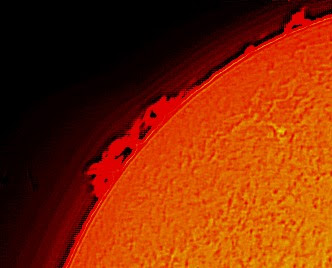
Its ironic but the sun is one of my favorite targets. There is so much detail and structure that just isn't apparent on other celestial bodies. This is particularly true with my PST. I managed to take some decent HA videos but only one of them actually processed decently. Still, I'm hopefully that the next few weeks will provide more opportunities! Enjoy!

Its ironic but the sun is one of my favorite targets. There is so much detail and structure that just isn't apparent on other celestial bodies. This is particularly true with my PST. I managed to take some decent HA videos but only one of them actually processed decently. Still, I'm hopefully that the next few weeks will provide more opportunities! Enjoy!
Thursday, June 16, 2011
Saturn
Saturn sits just over 1 billion kilometers from Earth at its closest. Its amazing to me that, given the enormous distance away, we are still treated to some absolutely breathtaking views of the ringed planet. Since the rain has more or less stopped over the past few weeks I've b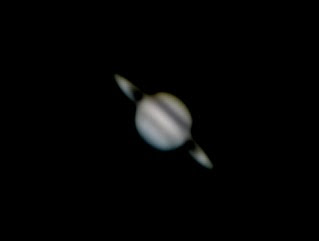 een doing my best to get out and take some shots of Saturn. The latest pictures were about 5 minute movies that I shot with a Phillips webcam and stacked together. They turned out reasonably well, but I'm hampered by the relatively small size of the chip in the webcam. I have another idea that I'm going to try (hopefully tomorrow) which is to use a point and shoot camera and try some afocal shots.
een doing my best to get out and take some shots of Saturn. The latest pictures were about 5 minute movies that I shot with a Phillips webcam and stacked together. They turned out reasonably well, but I'm hampered by the relatively small size of the chip in the webcam. I have another idea that I'm going to try (hopefully tomorrow) which is to use a point and shoot camera and try some afocal shots.
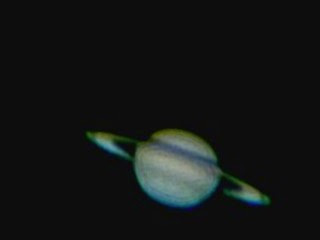
Anyway for the time being these are the best shots of Saturn I could get.
 een doing my best to get out and take some shots of Saturn. The latest pictures were about 5 minute movies that I shot with a Phillips webcam and stacked together. They turned out reasonably well, but I'm hampered by the relatively small size of the chip in the webcam. I have another idea that I'm going to try (hopefully tomorrow) which is to use a point and shoot camera and try some afocal shots.
een doing my best to get out and take some shots of Saturn. The latest pictures were about 5 minute movies that I shot with a Phillips webcam and stacked together. They turned out reasonably well, but I'm hampered by the relatively small size of the chip in the webcam. I have another idea that I'm going to try (hopefully tomorrow) which is to use a point and shoot camera and try some afocal shots.
Anyway for the time being these are the best shots of Saturn I could get.
Sunday, June 5, 2011
Summer Skies
As of June 2nd it looks like summer has 'officially' begun in Vancouver. The weather has finally improved and the skies are clear enough to do some decent stargazing. The only downside is that because summer has started so late the skies don't darken until around midnight. But nevermind that. This past weekend I spent two nights and a total of close to 8 hours st argazing on Mount Seymour. I spent most of the time trying to work out how to use my new autoguider which has been sitting in storage for nearly 4 months since I bought it. Turns out that its quite easy to use, although I'll have to see if the set up I have will really work with it.
argazing on Mount Seymour. I spent most of the time trying to work out how to use my new autoguider which has been sitting in storage for nearly 4 months since I bought it. Turns out that its quite easy to use, although I'll have to see if the set up I have will really work with it.
With the help of a friend, Chris Ho, I also attached a laser pointer to the rings of my refractor (on the left side of the telescope in the pictures). Unfortunately the batteries get really cold and it doesn't work very well. I'm going to have to see if there is another way around this problem; I'll think of something I'm sure.

 argazing on Mount Seymour. I spent most of the time trying to work out how to use my new autoguider which has been sitting in storage for nearly 4 months since I bought it. Turns out that its quite easy to use, although I'll have to see if the set up I have will really work with it.
argazing on Mount Seymour. I spent most of the time trying to work out how to use my new autoguider which has been sitting in storage for nearly 4 months since I bought it. Turns out that its quite easy to use, although I'll have to see if the set up I have will really work with it.With the help of a friend, Chris Ho, I also attached a laser pointer to the rings of my refractor (on the left side of the telescope in the pictures). Unfortunately the batteries get really cold and it doesn't work very well. I'm going to have to see if there is another way around this problem; I'll think of something I'm sure.

So like I said, this past weekend I spent quite a bit of time stargazing. On Friday night it was mostly an inauguration of the new telescope and then testing out my autoguider. On Saturday I set up to do some imaging and despite some thin, high clouds I was rewarded with two decent photos. The first was of Saturn, and although its not bad, I'm not satisfied. Hopefully I'll get a few more opportunities before the summer. This particular photo was shot with a Celestron NexImage through a Celestron 8" SCT. The image was 1000 frames stacked in Registack.
The other picture was of M13, the Hercules Cluster. Focusing was a bit of a bugger, mostly tons of trial and error. Fortunately my new motor focuser should be arriving someti me in the next couple of weeks. Hopefully the postal strike doesn't get in the way. Anyway, I was using my canon 400D and stacked 5 images of 90 seconds each. I didn't do a particularly good polar alignment (at least as far as photography goes) and with the 3 minute exposures I tried I was beginning to see some trailing so I opted for the shorter exposures in the end. Plus, it meant less waiting and at 2:30 am I was getting cold and tired. After I stacked the pictures I noticed a very unexpected result. Looking closely at the middle left there was a slight smudge that at first I thought was just the result of imperfect focusing. After checking with a star atlas I realised that not only did I photograph M13 but I also managed to capture NGC 6207, a spiral galaxy about 30 million light years away.
me in the next couple of weeks. Hopefully the postal strike doesn't get in the way. Anyway, I was using my canon 400D and stacked 5 images of 90 seconds each. I didn't do a particularly good polar alignment (at least as far as photography goes) and with the 3 minute exposures I tried I was beginning to see some trailing so I opted for the shorter exposures in the end. Plus, it meant less waiting and at 2:30 am I was getting cold and tired. After I stacked the pictures I noticed a very unexpected result. Looking closely at the middle left there was a slight smudge that at first I thought was just the result of imperfect focusing. After checking with a star atlas I realised that not only did I photograph M13 but I also managed to capture NGC 6207, a spiral galaxy about 30 million light years away.
So with my first real star cluster successfully photographed I just can't wait to get out and do some more stargazing! Hopefully the weather cooperates.
The other picture was of M13, the Hercules Cluster. Focusing was a bit of a bugger, mostly tons of trial and error. Fortunately my new motor focuser should be arriving someti
 me in the next couple of weeks. Hopefully the postal strike doesn't get in the way. Anyway, I was using my canon 400D and stacked 5 images of 90 seconds each. I didn't do a particularly good polar alignment (at least as far as photography goes) and with the 3 minute exposures I tried I was beginning to see some trailing so I opted for the shorter exposures in the end. Plus, it meant less waiting and at 2:30 am I was getting cold and tired. After I stacked the pictures I noticed a very unexpected result. Looking closely at the middle left there was a slight smudge that at first I thought was just the result of imperfect focusing. After checking with a star atlas I realised that not only did I photograph M13 but I also managed to capture NGC 6207, a spiral galaxy about 30 million light years away.
me in the next couple of weeks. Hopefully the postal strike doesn't get in the way. Anyway, I was using my canon 400D and stacked 5 images of 90 seconds each. I didn't do a particularly good polar alignment (at least as far as photography goes) and with the 3 minute exposures I tried I was beginning to see some trailing so I opted for the shorter exposures in the end. Plus, it meant less waiting and at 2:30 am I was getting cold and tired. After I stacked the pictures I noticed a very unexpected result. Looking closely at the middle left there was a slight smudge that at first I thought was just the result of imperfect focusing. After checking with a star atlas I realised that not only did I photograph M13 but I also managed to capture NGC 6207, a spiral galaxy about 30 million light years away. So with my first real star cluster successfully photographed I just can't wait to get out and do some more stargazing! Hopefully the weather cooperates.
Friday, April 22, 2011
Sun Photography!

Well, its been nearly 8 weeks since I got any serious stargazing done. And I blame the absolutely lousy weather we've been having. Every now and then it looks like its about to clear up for an evening I'm thwarted by clouds. This weekend was no exception; Thursday was looking promising but at the last minute clouds took over the sky. Friday is probably going to be one of the few clear days in the next few weeks, and wouldn't you know it I'm going to Edmonton. Anyway, in an effort to make the most of a terribly ironic situation I set up my telescopes just after lunch to do some solar observing (and to make sure everything was in working order for International Astronomy Day in Aldergrove Park).

I got some half decent pictures of a few sunspots but the real gem was looking at the solar atmosphere through my HA telescope. Imaging through that scope is a real challenge though; my best guess is that the focal point is actually inside my camera's focus. Sad. Hopefully I can work something out. And hopefully there is more to see in the coming weeks than just the sun!
Friday, February 25, 2011
Equipment & Gear
Having recently moved back to Canada from Hong Kong you could say I've sort of re-discovered my astronomy passion. It's difficult, if not impossible to do any form of meaningful stargazing in the light (and other) polluted skies of Hong Kong. So after being back in Canada for about 18 months I've managed to aquire quite a bit of very useful stargazing gear. So far all my astrophotography has been done with using the equipment below:
8" Celestron SCT
8" Celestron SCT
Skywatcher HEQ5
PST Solar Telescope
Homemade 6" Dobsonian
 I just purchased a Televue 85 apochromatic refractor as well as an adm side by side cradle. In addition to these I've also aquired a LVI 2 autoguider but none of this new equipment has been tested since the weather in Vancouver right now is absolute crap.
I just purchased a Televue 85 apochromatic refractor as well as an adm side by side cradle. In addition to these I've also aquired a LVI 2 autoguider but none of this new equipment has been tested since the weather in Vancouver right now is absolute crap.
On the one decent night in the last three months I set up my gear in a park across the street from my apartment and snapped this photo of it. If you look really closely in the background you can see a single bright 'star' which is actually Jupiter.
in the last three months I set up my gear in a park across the street from my apartment and snapped this photo of it. If you look really closely in the background you can see a single bright 'star' which is actually Jupiter.
Because it was about -5 Celsius at the time I was only out for about 90 minutes but during that time I managed to get one half decent picture of the Orion nebula which I've included below.
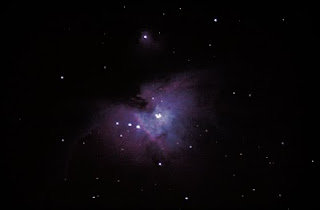
PST Solar Telescope
Homemade 6" Dobsonian
 I just purchased a Televue 85 apochromatic refractor as well as an adm side by side cradle. In addition to these I've also aquired a LVI 2 autoguider but none of this new equipment has been tested since the weather in Vancouver right now is absolute crap.
I just purchased a Televue 85 apochromatic refractor as well as an adm side by side cradle. In addition to these I've also aquired a LVI 2 autoguider but none of this new equipment has been tested since the weather in Vancouver right now is absolute crap.On the one decent night
 in the last three months I set up my gear in a park across the street from my apartment and snapped this photo of it. If you look really closely in the background you can see a single bright 'star' which is actually Jupiter.
in the last three months I set up my gear in a park across the street from my apartment and snapped this photo of it. If you look really closely in the background you can see a single bright 'star' which is actually Jupiter.Because it was about -5 Celsius at the time I was only out for about 90 minutes but during that time I managed to get one half decent picture of the Orion nebula which I've included below.
Anyway, this will probably be the last post for a few weeks because it looks like nothing but rain in the forecast. Figures, just when I get new gear that I want to use.....

Tuesday, February 8, 2011
First attempts
So I've been an amateur astronomer for about 3 years (not including the time I spent in asia where the hobby was effectively mothballed). At first I found it rather difficult to navigate my way around the sky but now that I've more or less figured that out I'm starting to try my hand at astrophotography. And for those of you who don't know, its unbelievably difficult. Well, I guess its not. Its quite easy to take really bad pictures but really hard to take decent photos.


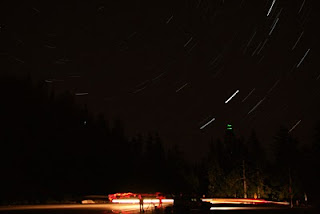
So here are my first few attempts. Bear in mind this is really a first go at it from the few clear days I've had since September.

This is obviously Jupiter. The red spot in the bottom left corner is a hurricane that's been spinning on Jupiter for over 400 years. The rest of the coloured bands are clouds similar to the ones on Earth but made of methane, helium and sulphuric acid.

Solar flare coming off the sun. Don't try this at home unless you have a Hydrogen alpha filter! Solar flares occur in the sun's coronasphere (basically the atmosphere of the sun). Usually we can't see it because the disk of the sun is too bright and washes it all out. But I have a special filter that blocks the majority of the disk's light. Very cool.

A first glance at the orion nebula! This was my first attempt at shooting a deep sky object (nebulas, star clusters, galaxies ect). Its not great but given the fact that it was taken from the park across from my building, in the middle of the city its not that bad.

Star trails at Seymour mountain. This is actually about 40 pictures I took over a period of about 90 minutes all stacked together. The lights on the bottom are passing cars. The star trailing is actually an artifact of the Earth's rotation. What you actually see here is the motion of the Earth.
Thursday, January 13, 2011
Welcome!
Welcome to my online astronomy blog. My name is Ian Doktor and I'm an avid amateur astronomer and high school physics teacher. I'm going to use this space to write about my astronomy experiences and post the pictures I take. For now, this is all I'm going to say but hopefully I'll post some pictures soon.
Subscribe to:
Posts (Atom)



